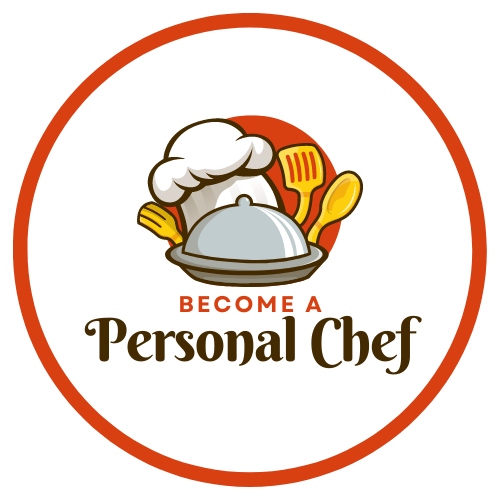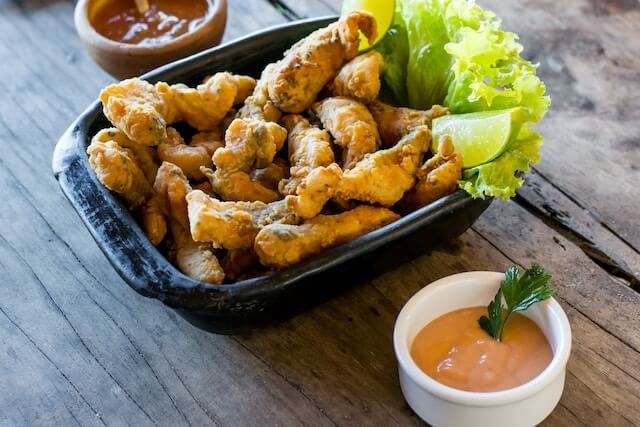Table of Contents
ToggleBrazilian Food For Personal Chefs
Welcome to the adventurous world of cuisine! As personal chefs, we are constantly searching for new and unique flavors to add to our repertoire. Today, we venture into the vibrant world of Brazilian cuisine. Get ready to tantalize your taste buds with a fusion of flavors and spices that will transport you straight to the heart of Brazil.
Brazilian cuisine is a reflection of the country’s diverse cultural influences, including Portuguese, African, and indigenous traditions. This blend of cultures has resulted in an eclectic mix of dishes that are both delicious and full of history. From savory stews and grilled meats to tropical fruits and exotic desserts, Brazilian cuisine offers something for every palate.
Aspiring personal chefs need to offer something different than traditional chefs who specialize in one or two kinds of cuisines. I’ve written an extensive article with links to many cuisines for your consideration – World Cuisine for Personal Chefs

Key Ingredients in Brazilian Cuisine
Brazilian cuisine is a colorful blend of influences, with recipes that vary from region to region. Some key ingredients include:
Rice and Beans: These are staples in Brazilian meals.
Yuca Root/Cassava: Used in various forms like farinha de mandioca (yuca flour) and tapioca.
Coconut: Used in many sweet dishes and to add creaminess and sweetness to many savory dishes.
Dendê Oil: A type of palm oil that is a cornerstone of Afro-Brazilian cuisine.
Açaí, Cashews, Pupunha, Brazil nuts: These native fruits and nuts are used in various dishes.
Feijoada Ingredients: Feijoada, a black bean stew with fresh pork or beef, is considered a national dish. Essential ingredients include black beans, rice, kale, oranges, and farofa (manioc flour).
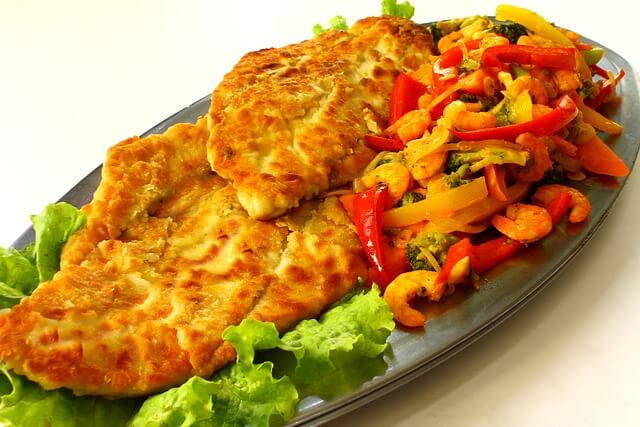
Sourcing Ingredients and Finding Substitutes
Most of these ingredients can be found at local grocery stores or online. In case certain ingredients are not available, substitutes can be used. For instance, vegetable oil can be used as an alternative to dendê oil, though it lacks the distinctive flavor. Coconut milk can be used instead of palm oil, but it may alter the taste slightly. Here are some common substitutions for hard-to-find ingredients:
Dendê Oil: This bright orange oil is commonly used in Brazilian cuisine, but it can be difficult to find outside of specialty stores. If you’re unable to source dendê oil, vegetable oil or coconut oil can be used as substitutes.
Palm Oil: Similar to dendê oil, palm oil is another ingredient that may be harder to find in regular grocery stores. In its place, try using coconut milk or a combination of vegetable and olive oils.
Fish Sauce: A staple in many Asian dishes, fish sauce adds a savory umami flavor. If you don’t have any on hand, soy sauce or tamari can be used as substitutes.
Agave Nectar: This natural sweetener is often used as a substitute for sugar in baking and cooking. If you don’t have agave nectar, honey or maple syrup can be used in its place.
Nutritional Yeast: This ingredient is commonly used to add a cheesy flavor to vegan dishes. If you’re unable to find nutritional yeast, try using a combination of cashews, nutritional yeast flakes, and salt blended together until it reaches a similar texture and flavor.
Remember, substitutions may alter the taste slightly but can still result in delicious dishes. Don’t be afraid to experiment and find what works best for your own preferences! Additionally, keep in mind that many specialty ingredients can be found in health food stores or online, making it easier than ever to incorporate them into your cooking.
However, it’s important to note that not all substitutions will work for every dish. It’s always a good idea to do some research beforehand or consult with a professional if you have any concerns about how a substitution may affect the overall flavor and texture of your dish.
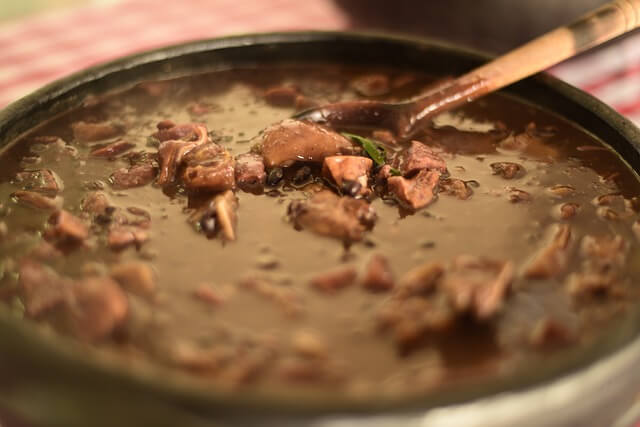
Cultural Significance and Dietary Considerations
Brazilian cuisine reflects the country’s diverse cultural heritage, with influences from native populations, Portugal, Africa, and other European countries. When preparing Brazilian dishes, it’s important to consider potential dietary restrictions. Many traditional dishes are gluten-free and can accommodate vegetarian diets.
However, meat and seafood play a prominent role in Brazilian cuisine, making it important to have options for those who follow a plant-based diet. Additionally, Brazil has a large population of people with lactose intolerance, so dairy-free alternatives should also be considered. Brazilian Food For Personal Chefs
Health Considerations and Accompaniments
While Brazilian cuisine features fresh ingredients and superfoods like açaí, it also includes rich, hearty dishes that should be enjoyed in moderation. Traditional accompaniments include rice, farofa, and a variety of fruits and vegetables.
However, it is important to note that some dishes may contain high amounts of salt and sugar, so be mindful of portion sizes and choose whole grain options when possible.
For those with dietary restrictions or preferences, Brazilian cuisine offers a variety of options. Many dishes can be made vegetarian by simply omitting meat or substituting with tofu or beans.
Gluten-free options are also widely available, as cassava flour (also known as tapioca flour) is commonly used in place of wheat flour in many recipes.

Presentation and Preparation
Brazilian dishes are often served family-style. Some dishes, like feijoada, require advance preparation due to long cooking times. Others, like pão de queijo (cheese bread), can be quickly made and served as a snack or appetizer.
To truly experience the flavors of Brazilian cuisine, presentation is key. Dishes are often served on large platters with colorful garnishes and fresh herbs. This not only adds to the visual appeal, but also enhances the overall taste of the dish.
The use of fresh ingredients is highly valued in Brazilian cooking. It’s common for households to have their own vegetable gardens where they grow their own produce. Fruits such as mangoes, pineapples, and passion fruit are abundant in Brazil and are commonly incorporated into dishes or enjoyed as a refreshing snack.
Seasonings and Spices
Brazilian cuisine is known for its bold and diverse flavors, which are achieved through the use of various seasonings and spices. Some popular seasonings used in Brazilian dishes include cumin, oregano, coriander, and parsley. Spices such as paprika, turmeric, and saffron are also commonly used to add depth to dishes.
Meat Dishes
As a country with a strong agricultural industry, Brazil is known for its meat dishes. Beef is especially popular, with churrasco (Brazilian-style BBQ) being a famous dish that consists of different cuts of meat cooked over an open flame. Other popular meat dishes include feijoada (a stew made with black beans and various types of pork), carne de sol (salted dried beef), and moqueca (a seafood stew cooked in a clay pot).
Here are some kitchen equipment a personal chef should have when cooking Brazilian food:
A must-have for preparing traditional Brazilian barbecue, or churrasco.
Used for grilling meats on the churrasqueira for churrasco.
Essential for cooking black beans quickly for feijoada, a popular Brazilian stew.
Great for slow-cooking stews and other hearty dishes.
Used for sautéing and frying a variety of dishes, such as the Brazilian omelette-like dish called frigideira.
Used for grinding and crushing ingredients like garlic, pepper, and herbs.
Traditional cookware used for slow cooking dishes, enhancing their flavor.
Necessary for making popular Brazilian snacks like coxinha (chicken croquettes) and pastéis (filled pastry pockets).
Useful for grating ingredients like cassava and cheese for pão de queijo (cheese bread).
Essential for making açaí bowls, fruit juices, and blended sauces.
Ideal for stirring dishes without scratching your pots and pans.
A good quality, sharp chef’s knife is necessary for precise cutting and slicing.
A sturdy cutting board is needed for preparing ingredients.
Various sizes are useful for preparing and mixing ingredients.
For accurate measurement of ingredients.
Wondering what tools a personal chef might need? I’ve written an extensive article for you – A Comprehensive List Of Must-Have Tools and Essential Items for the Personal Chef
Remember, investing in high-quality tools can greatly enhance your cooking experience and the outcome of your dishes. Keep them well-maintained for the best results.
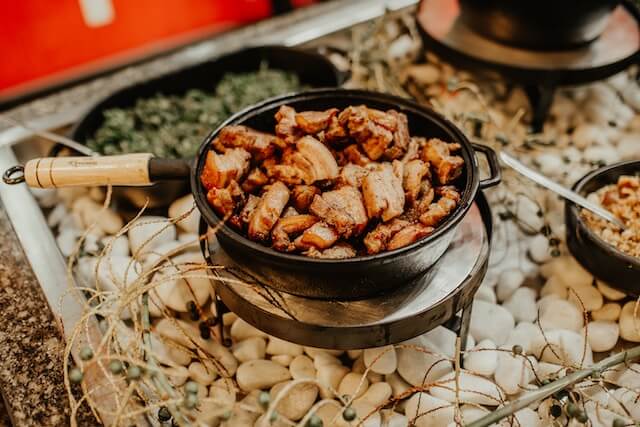
Personalizing Brazilian Cuisine
As a personal chef, you can personalize Brazilian dishes to suit your clients‘ preferences. Whether they prefer less heat, a different protein, or a vegetarian version, there’s room for flexibility while still maintaining authenticity.
So, are you ready to take your clients on a culinary journey to Brazil? With its diverse flavors and rich cultural history, Brazilian cuisine is sure to impress!
